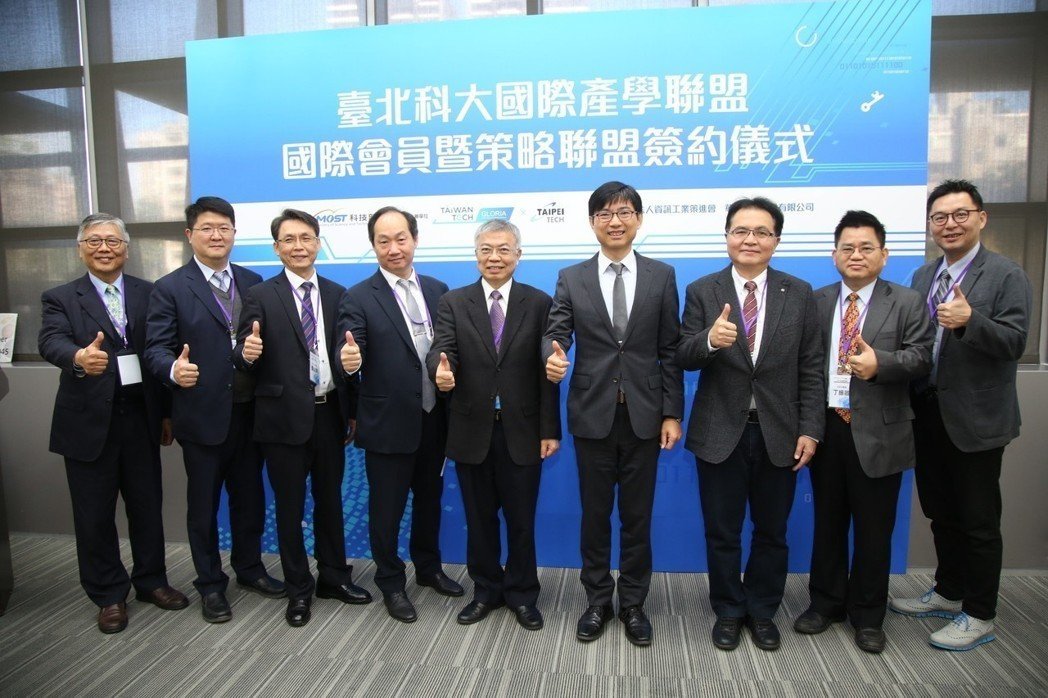Multi-lateral strategic alliance on smart manufacturing

Taipei Tech Global Research & Industry Alliance (GLORIA) enlisted academia-industry cooperation with Walsin Technology Corporation (WTC) and Institute for Information Industry (III). Director Chiou Chyou Huey on behalf of Ministry of Science and Technology (MOST), President Wang Sea Fue of Taipei Tech, Acting President Hsiao Po Jen of III, and General Manager Gu Li Jing of WTC signed the memorandum of understanding for the strategic alliance.
The multidimensional service for industry, academia, and research.
Taipei Tech GLORIA is the single platform that provides multidimensional services, bridging the academia and the international markets by channeling the wise brains and their researches to the industries. Currently, there are twenty-six members participating in, and three of them are international. The platform is expected to benefit the research professionals with the cooperation to turn their ideas practical and profitable, to upgrade the techniques through the instilling of the new ideas, and to bring in more opportunities for business.
“WTC is the corporation of our outstanding alumnus,” said Taipei Tech President Wang Sea Fue. “They took membership of Taipei Tech GLORIA since 2018 and has been stressing the importance of universities-industry cooperation. Aside from WTC, there is also PSA-Kamaya from Malaysia joining forces in seeking possibilities brought about by the consolidated relationship between academia and industries.”
The project in cooperation with WTC provides a series of services, including intellectualized production lines, professional courses for the WTC employees, customized job fairs on campus. All these are aiming at netting the distinguished Malaysian students at Taipei Tech or creating more opportunities for international academia-industry cooperation after those students graduate working in their home country.
WTC General Manager Gu Li Jing pointed out that the current amount of passive component production is not enough to supply some six hundred international clients, although the production of vehicle electronics are comparatively more automatized.
“Hopefully the cooperation with Taipei Tech GLORIA is able to carry out full automatization of the assembly lines to double or even triple the productivity,” said Gu. “The project is also believed to benefit the fostering of international professionals.”
“The ServBox” making the production lines smarter.
This time, the ServBox – a portable device displayed in Taipei Tech smart factory that enables remote production management with cloud computing and IoT – received supports from III through the Technology Development Program (TDP) which has been assisting the export of the machines in central Taiwan since 2008. The ServBox has been applied to more than three thousand machines located worldwide in China, Mexico, etc., to accelerate the development of smart manufacture.
“The ServBox is a revolutionary appliance that puts forth service-driven manufacturing,” III Acting President Hsiao Po Jen said. “It is considered an efficient way to improve the customer relationships with a more flexible adaptive control and production management carried out by cloud computing.”
Ting Chen Ching, Chair of Taipei Tech Mechanical and Mechatronic Engineering, indicated that the students are able to learn a comprehensive range of techniques in the complete production lines through the smart factory of the university and co-teaching by the industry leaders. The smart factory also serves as the model university factory for the employees of more than seventy corporations and provides services for other forty factories.
“Taipei Tech smart factory best presents the attributes of I4, meaning the machines do the mutual communications well,” Ting said. “As an order is inputted, these machines assign themselves to different parts of the production to finish the work.”
“Now the plant of WTC in Malaysia would initiate Cyber-Physical System (CPS) at the beginning phase,” he added. “It is believed to put through complete automatization for them in one and a half to two years.”